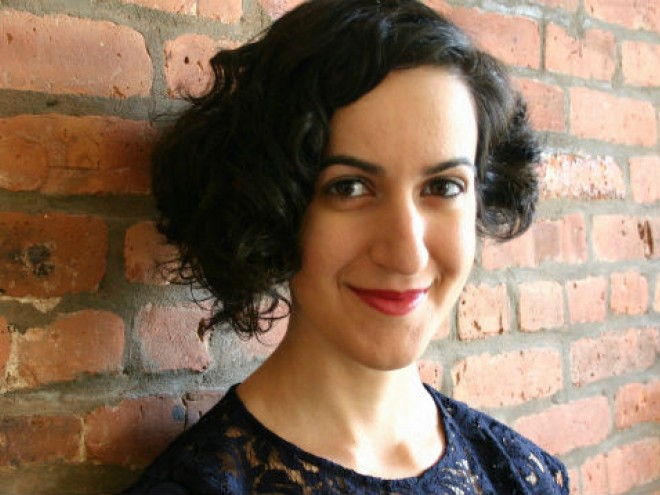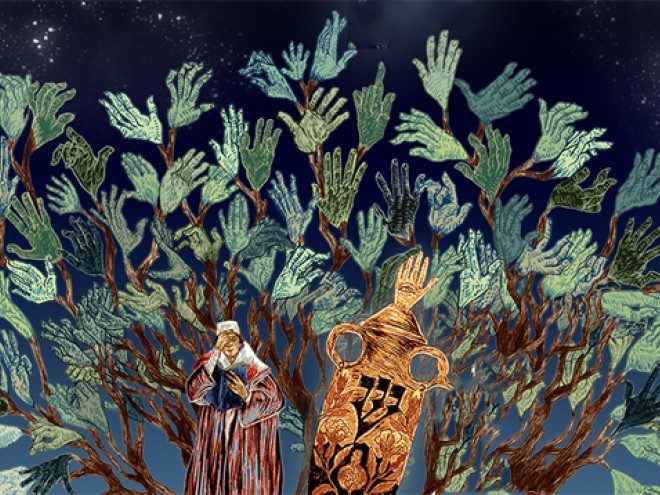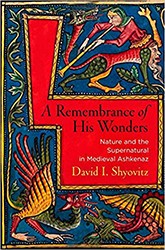Told from multiple points of view, including that of a little boy, a female college student, a middle-aged college professor, and an old man, Sigal Samuel’s The Mystics of Mile End examines the intersection of cryptic Jewish mysticism and religious life in modern-day Montreal.
David Meyer is a lapsed Orthodox Jew whose life (and marriage) was never the same upon his discovery of Gershom Scholem’s Major Trends in Jewish Mysticism. After reading it, he dropped out of yeshiva and marched down the path that eventually led to his becoming a professor of Jewish mysticism. A widower father of two children, Samara and Lev, with a penchant for sleeping with the occasional graduate student, David feels most alive while jogging — he’s convinced that after a certain level of exertion he hits a unique runner’s high that allows him to hear his heart conveying a message of two syllables, either Ani or Ayin.
Ani, meaning “I,” and Ayin, meaning “nothing” are diametrical opposites, and the contrast of these two ideas is not lost on the reader familiar with Jewish Hasidic ideas. A well-known Hasidic teaching (some attribute it to Rabbi Simcha Bunim of Peshischa, others to the mystically-minded Rebbe Nachman) states that “In one pocket every person should carry a piece of paper that says ‘I am but dust and ashes,’ and in the other pocket should be a paper that says ‘For my sake was the world created.’ ” This classic mystical idea of striving to leave one’s mark in the world while remaining aware of one’s ultimate insignificance pops up in different guises throughout the absorbing novel.
The Mystics of Mile End, the debut novel from Samuel, a Montreal native who daylights as an editor at the Forward is, as might be expected, riddled with references to the Jewish mysticism. Aside from David’s career studying mystical texts with a scholarly eye, there are numerous characters attempting to build and “climb” the mystical Tree of Life — most humorously, a batty old neighbor attempts to build such a Tree on his front lawn out of toilet paper rolls and dental floss. And just as the Kabbalah is often treated as a much-aligned Jewish area of study by the Jewish intellectual mainstream, each member of the Meyer family suffers from some degree of isolation and separation from themselves and one another.
Samara’s struggle is coming to terms with her distant father in light of her burgeoning homosexuality, and a decrease in what was once a fervent interest in Jewish practice. Lev comes from the other side of the religious spectrum — as he ages, his interest in religious life increases, much to the consternation of his father and sister. And David gradually feels the build-up of distance and detachment from his children, which becomes a major source of anguish. In a powerful moment, he jogs past a synagogue just as it lets out: “Dark beards and scrawny shoulders pushed past, while the gazes of their owners slid right through me; I felt, for a moment, the loneliness of the invisible.”
Samuel’s writing is crisp and enjoyable and the text is peppered with charming little anecdotes about academic and religious life in Montreal. The effortless way in which Samuel inhabits the four distinct voices conveying the narrative is impressive. Similarly, her command of complex mystical ideas is assured, but what’s most striking is her ability to confidently imbue a story about a family struggling with contemporary issues with insight and humanity gleaned from age-old mystical texts.




